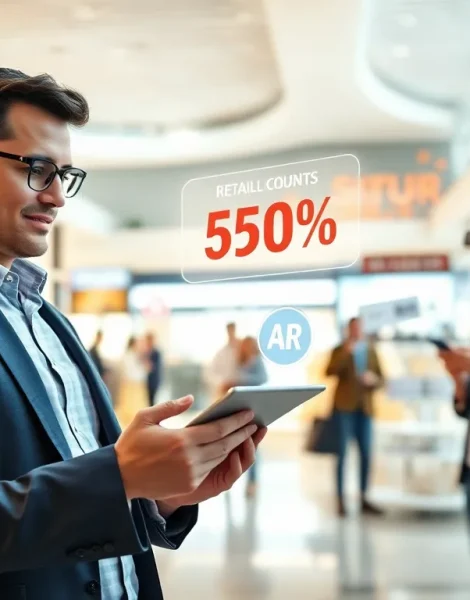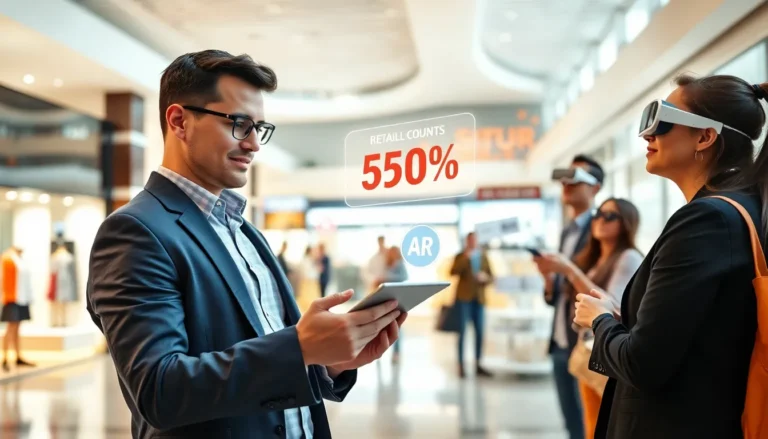Imagine walking through a mall and seeing virtual discounts hovering over stores, or having your favorite dinosaur roar at you from your living room. That’s the magic of augmented reality (AR). While it sounds like something straight out of a sci-fi movie, AR is very much a part of our world today. From enhancing the way we shop to changing how we play, augmented reality projects are revolutionizing our experiences in ways we never thought possible. So buckle up as we embark on this exciting journey through the realm of AR.
Table of Contents
ToggleUnderstanding Augmented Reality

Augmented reality is a technology that overlays digital information onto the real world, creating a composite view that enhances our perception of reality. Unlike virtual reality, which immerses users in a completely digital environment, AR adds a layer of interactivity to our existing surroundings. This is achieved through the use of devices like smartphones, tablets, and smart glasses, which use cameras and sensors to detect the physical environment and place digital objects in it. Whether it’s displaying directions on a street or projecting an artwork in your living room, AR blends the digital and physical worlds seamlessly.
In recent years, the demand for AR has spiked as advancements in technology have made it more accessible and affordable. The applications range across various fields, making understanding how AR works essential to grasping its potential.
Applications of Augmented Reality
Augmented reality isn’t just about flashy graphics and fun games: its applications span multiple industries. Here’s a closer look:
Retail and E-commerce
In the retail space, AR is transforming the shopping experience. Brands now allow customers to virtually try on clothes or preview how new furniture will look in their homes before making a purchase. This boosts consumer confidence and significantly reduces return rates.
Education
With AR, classrooms are becoming more engaging and interactive. Imagine students learning about the solar system with planets orbiting right in their classroom or dissecting a virtual frog. This hands-on approach not only makes learning fun but also helps retain information better.
Healthcare
In the medical field, AR assists in training and surgical operations. Surgeons can overlay critical information during procedures, leading to improved precision and reduced risks. Also, AR technologies are being used for patient education, providing a clearer understanding of medical conditions.
Real Estate
When it comes to real estate, AR offers potential buyers virtual tours of properties. This innovation allows individuals to visualize spaces without needing to step foot in them, streamlining the buying process.
Notable Augmented Reality Projects
Several AR projects have made headlines, showcasing the technology’s capabilities:
Pokémon GO
One of the most famous AR projects, Pokémon GO, took the world by storm in 2016, encouraging players to step outside and catch virtual creatures in real-world locations. The app demonstrated AR’s potential to get people moving while connecting them with their environment.
IKEA Place
This app allows users to virtually place furniture in their homes using their smartphone cameras. By visualizing how a piece of furniture fits into their space, customers can make informed decisions, reducing the uncertainty that often comes with online shopping.
Google Lens
Google Lens uses AR to enhance the way users search for information. By simply pointing their camera at an object, users can access detailed information, making everyday tasks easier, from identifying a flower to translating text.
Challenges in Augmented Reality Development
Although the potential of AR is immense, developers face several challenges:
Technology Limitations
Even though advancements, current hardware can still hinder AR experiences. High-quality graphics demand superior processing power, which many devices lack, limiting the depth of interaction.
User Adoption
While AR has gained traction, widespread adoption still lags. Potential users may be hesitant to invest in devices or apps, especially in markets where the benefits of AR are not well understood.
Privacy Concerns
Using AR often requires access to cameras and personal data, raising red flags about privacy. Developers must ensure robust data protection measures to gain user trust.
Future Trends in Augmented Reality
The future of augmented reality is bright, with numerous trends indicating how AR will further integrate into our lives:
Enhanced Wearable Technology
As technology evolves, wearable AR devices are becoming more sophisticated. Smart glasses and headsets will likely become standard, providing hands-free experiences and making AR more immersive.
Integration with AI
Combining AR with artificial intelligence can lead to more intuitive applications. Imagine AR that adjusts to the specific context of use or offers tailored recommendations based on user behavior.
Expansion in Industries
More sectors, including tourism, construction, and logistics, are expected to adopt AR for improved efficiency and user experiences. Minor tweaks can have monumental impacts.









